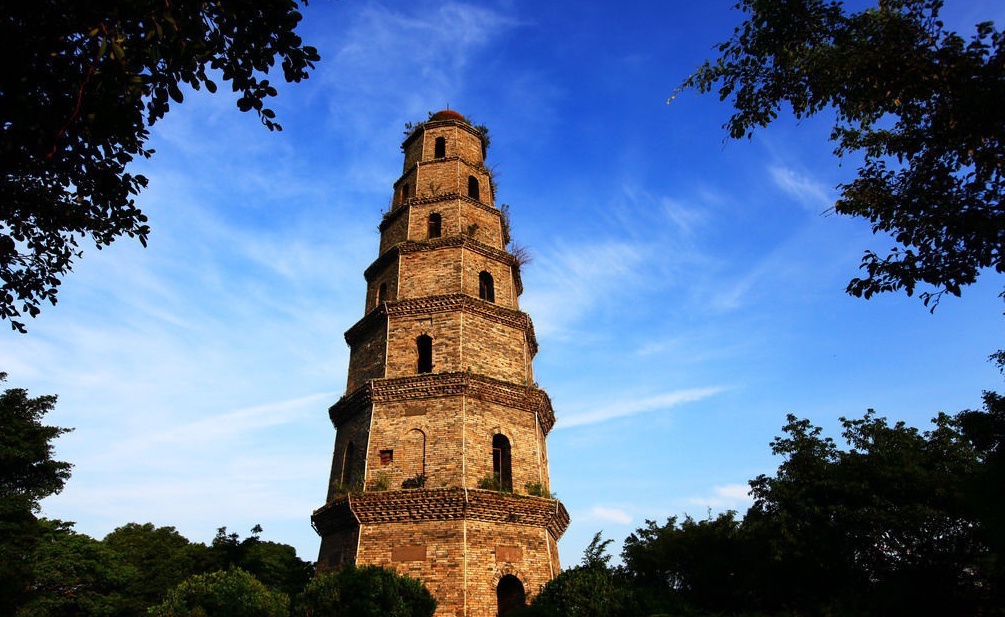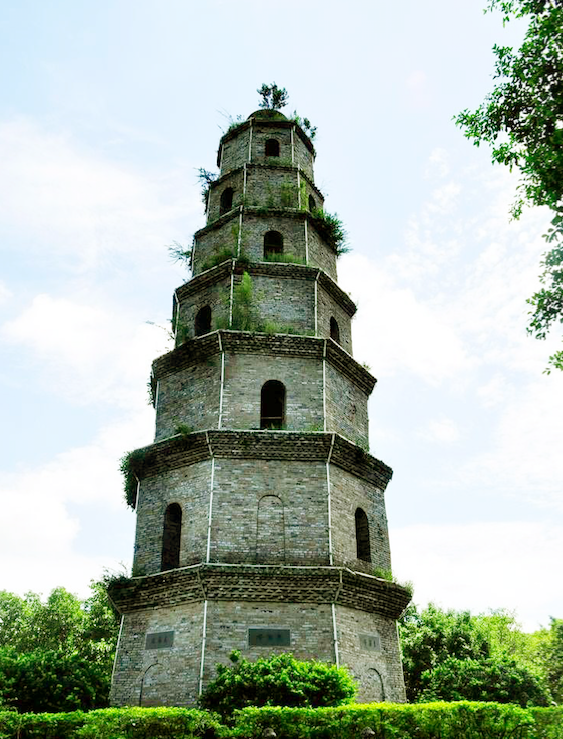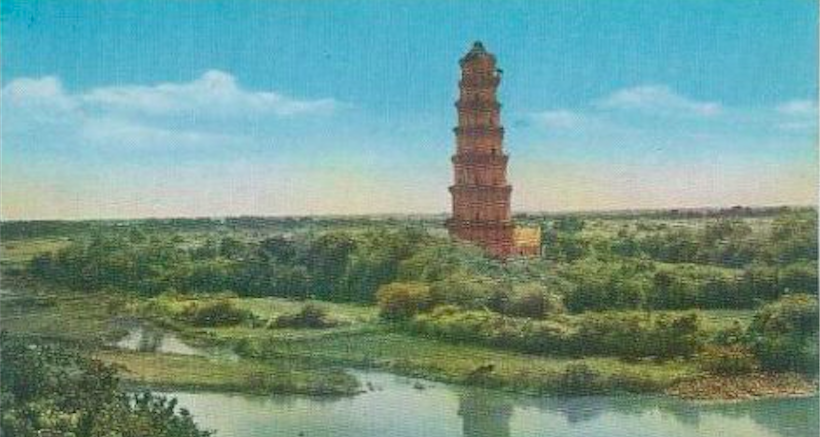Naming and History
Also called the Xiangou Pagoda(仙沟塔), the Jianlong Pagoda lies about seven kilometers to the south east of Ding’an and is preserved in good condition. Construction began in 1751 CE during the reign of the Qing Qianlong Emperor with funds contributed by the local county magistrate Wu Wenyun(伍文运) and a scholar named Lin Qihe (林起鹤), amongst others. The money ran out and further funds were subscribed to facilitate the pagoda’s completion in 1765 CE.
This brick built pagoda rises to a height of 25 meters over seven stories. On each story there are eight actual doorways and seven false ones, although it is hard to tell which is which. The doorways are staggered to prevent stress on the tower’s structure. No modern building materials such as cement, concrete or reinforcing bars feature in the pagoda’s construction; all the bricks are held in place by a mortar made from sticky gelatinous rice.
“Shocking” Fact
For more than 250 years, no matter what the weather, the pagoda has stood proud and tall though fierce winds and thunderstorms. Surprisingly, there is a half-meter long iron lighting conductor fixed to the top of the tower, which predates the device invented by American scientist Benjamin Franklin in 1749.The bricks of the pagoda are each inscribed with a Chinese character taken from the 6th century “Thousand Character Classic”(千字文). On the first floor, there is a stone plaque on the wall bearing the three characters of the Jianlong Pagoda’s Chinese name. Inside, visitors can climb the brick spiral staircase to the top of the tower to view the Nandu River in the distance.
Construction
A typical feng shui structure, the Jianlong Pagoda is designed according to the eight trigrams of the ancient I-Ching, also known as the Book of Changes. This accounts for the pagoda’s octagonal shape, eight being a revered number according to this text. Many Chinese characters are inscribed along the walls, some of which include those for the sun, moon, stars, celestial bodies, heaven, the earth and the colors black and yellow, which represent water and earth respectively according to traditional Chinese culture. Above the entrance on the ground floor there is a clearly readable inscription that runs “With favorable weather for crops, the country flourishes and the people are at peace”. The pagoda’s name comes from the I-Ching, which says “To see a dragon in the fields brings great benefit to the people.” This is a pun on the pagoda’s Chinese name, which literally means “to see a dragon”.
Legends, Officials, and Restoration
Over time, the local Ding’an people attached a degree of magical folklore to the pagoda. They say that upon its completion, a huge dragon drove five multi-colored clouds over today’s Longgun Hill, a sure sign of excellent feng shui in the area. Meteorological experts explain the legend as follows: The Longgun area is well known for its frequent thunder and lighting storms due to the many hills and lakes in the vicinity. It is therefore highly likely that the type of phenomenon described in the legend could arise due to the interaction of lightning and water vapor.
Coincidentally, in 1773, six years after the completion of Jianlong Pagoda, the famous Hainan scholar Zhang Yuesong (张岳崧) was born in Gaolin Village, Ding’an. In the entire history of the town only two pairs of father and son imperial civil service graduates were born there: Zhang Yuesong and his son Zhang Zhongxiu (张钟秀) along with Wang Yindou (王映斗) and his son Wang Qicheng (王器成). All four were born after the completion of the pagoda, which the Chinese considered auspicious – since throughout Hainan’s history a total of only seven pairs of father/son graduates are recorded.
Repair and preservation work was carried out on the pagoda in 1956 and again in 1986, when the structure became a county-level cultural relic. Further work undertaken in 1996 by the Ding’an Cultural Department restored the structure to its original splendor.







